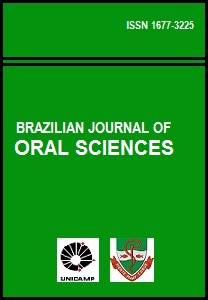Abstract
Aim: This study evaluated the effect of a coupling agent ceramic primer (CP) on the microshear bond strength (ìsbs) between luting cements and zirconia-based ceramic. Methods: Zirconia discs (Cercon) were made and finished with silicon carbide paper and submitted to air abrasion using 50 µm aluminum oxide particles (Al2 O3 ) under 4 bar pressure. Zirconia disks were randomly assigned to four groups (n=10): (G1) ResiCem luting cement + Porcelain Primer, (G2) ResiCem luting cement only, (G3) Clearfil Esthetic Cement + Clearfil Ceramic Primer and (G4) Clearfil Esthetic Cement only. The luting cements were prepared according to manufacturers’ recommendations and inserted in an elastomeric mold positioned onto a zirconia disc. Each specimen was photoactivated by 20 s. The specimens were stored at 100% relative humidity and 37ºC for 24 h. The ìsbs test was performed using universal testing machine at a crosshead speed of 0.5 mm/min. An optical microscope was used to analyze the failure modes and illustrative images were captured with a scanning electron microscope. The ìsbs data were analyzed by two-way ANOVA (p<0.05). Results: No significant difference was found among the four groups G1 (17.4±6.8), G2 (17.1±5.5), G3 (15.6±5.5) and G4 (14.2±3.5), all of which showed 100% of adhesive failures. Conclusions: CP showed no increase in the ìsbs between zirconia-based ceramic and resin luting cements.The Brazilian Journal of Oral Sciences uses the Creative Commons license (CC), thus preserving the integrity of the articles in an open access environment.
Downloads
Download data is not yet available.

